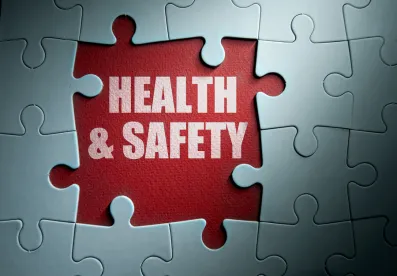As states continue to adopt shelter-in-place orders to stop the spread of COVID-19, many employers remain open for business and need employees to perform essential operations. Here are some tips for employers with essential employees based on recent Centers for Disease Control and Prevention (CDC) and Department of Labor (DOL) guidance.
-
Implement Safety Practices for “Critical Infrastructure Workers” Who May Have Had COVID-19 Exposure
In an effort to keep essential businesses operating, the CDC recently issued guidance for employers on implementing safety practices for “critical infrastructure workers” who may have been exposed to COVID-19 through a “household contact or having close contact within six feet of an individual with confirmed or suspected COVID-19.” According to the guidance, critical infrastructure workers include:
-
Federal, state, and local law enforcement;
-
911 call center employees;
-
Fusion Center employees;
-
Hazardous material responders from government and private sector;
-
Janitorial staff and other custodial staff; and
-
Workers – including contracted vendors – in food and agriculture, critical manufacturing, informational technology, transportation, energy, and government facilities.
The CDC explains that employers may permit critical infrastructure workers to continue to work following potential COVID-19 exposure if they remain asymptomatic and employers take additional precautions to protect the workplace community. Those additional precautions include:
-
Taking the employee’s temperature and assessing their symptoms prior to the start of work;
-
Requiring employees who do not have a temperature or symptoms to “self-monitor under the supervision of their employer’s occupational health program”;
-
Requiring the employee to wear a face mask at all times in the workplace for 14 days after their last exposure;
-
Enforcing social distancing standards as work duties permit; and
-
Cleaning and disinfecting all areas, such as offices, bathrooms, common areas, and shared equipment.
If an employee becomes ill while at work, the CDC advises that the employee should be sent home immediately, and workplace surfaces should be cleaned and disinfected. In addition, the employer should identify other employees who had contact with the ill employee – including in the two days prior to the day the employee exhibited symptoms. Any employee who came within six feet of the infected employee is considered to have been exposed.
-
Conduct a Workplace Hazard Assessment and Equip Employees with PPE “Wherever it is Necessary”
The Occupational Safety and Health Act (OSH Act) states that each employer owes a general duty to provide a workplace free from known hazards that are likely to cause death or serious physical harm to employees. If your business has not done so already, it should conduct a workplace hazard assessment “to determine if hazards are present, or are likely to be present, which necessitate the use of personal protective equipment” (PPE).
If the assessment establishes that the workplace is or is likely to be exposed to COVID-19, then an employer is required to equip its employees with PPE “wherever it is necessary by reason of hazards of processes or environment.” Nothing requires an employer to provide PPE to its entire workforce, as long as employees who need PPE receive it. However, an employer’s determination of who does and does not need PPE must be objectively reasonable.
PPE consists of protective equipment for the eyes, face, head, and extremities, including protective clothing, protective shields and barriers, and respiratory devices. For working environments where respiratory devices are necessary, employers must provide NIOSH-certified respirators, such as N95 masks.
Recognizing that it may be difficult for employers to obtain PPE because of the nationwide shortage, in its guidance issued late last week, the DOL encouraged employers to “reassess engineering controls, work practices, and administrative controls” to “decrease the need for N95 respirators.”
Where the shortage prevents the employer from obtaining new PPE, the DOL instructs that employees may extend the use or reuse masks, “as long as the respirator maintains its structural and functional integrity and the filter material is not physically damaged, soiled, or contaminated” and, in some cases, even use expired masks.
-
Proceed with Caution if Employees Refuse to Come to Work
According to the DOL, if employees believe that the workplace is exposed to a hazard, they can file a complaint with the Occupational Safety and Health Administration (OSHA) at any time, and employers should be prepared to respond to such complaints. The OSH Act, however, does not generally afford employees the right to walk off the job because of allegedly unsafe conditions. As a result, employers ordinarily would be able to discipline employees for refusing to work.
Employers, however, should proceed with caution if an employee refuses to come to work because of alleged unsafe working conditions related to COVID-19, and each circumstance should be evaluated on a case-by-case basis. Under the OSH Act, employees may refuse to work where workplace hazards present an imminent danger of death or serious physical harm. In these situations, employees will have a legally protected right to refuse to work if (1) they ask the employer to eliminate the danger and the employer fails to do so, (2), the employee genuinely believes that the danger is imminent, (3) a reasonable person would agree that there is a real danger of death or serious injury, and (4) there is not enough time, due to the urgency of the hazard, to get it corrected through regular enforcement channels. Retaliating against an employee who refuses to come to work for these reasons could violate OSHA as well as other applicable federal and state laws.
Employers can reduce the risk of employee action by taking the steps outlined above to reduce hazards in the workplace and documenting those efforts in workplace policies and employee communications.
Overall, many employers remain open during the COVID-19 pandemic and need their essential employees to be present at the workplace. To protect their workforce, employers should adhere to CDC and DOL guidance on implementing safety practices for employees.




 />i
/>i

